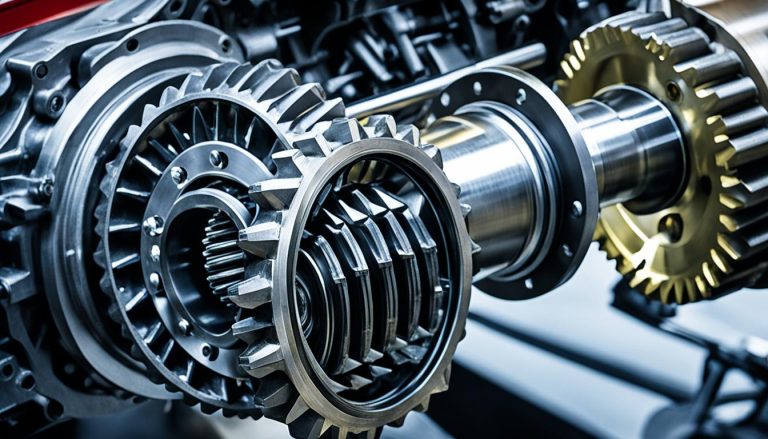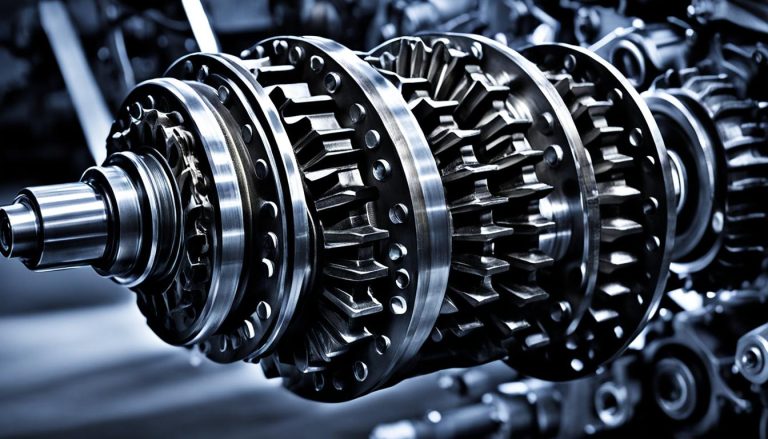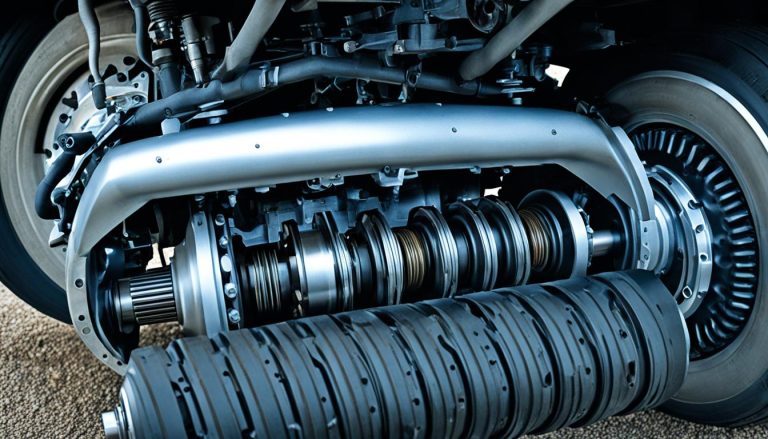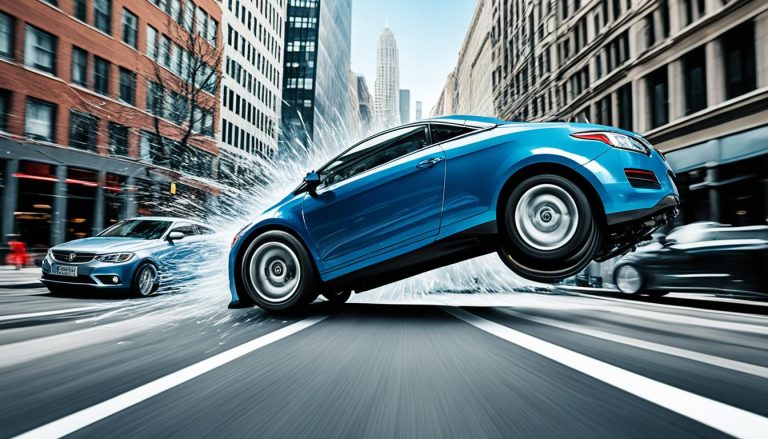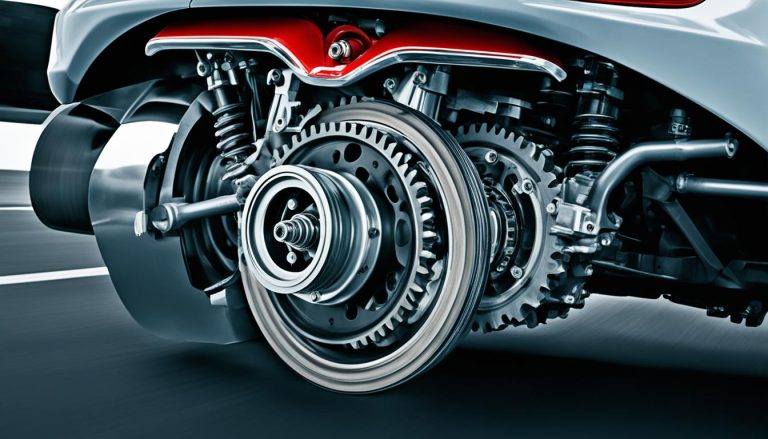Open Differential Advantages: Key Benefits Unveiled
As you navigate the roads and face the inevitable turns and twists of your commute, the open differential in your vehicle is hard at work. It may not be something you think about daily, but the open differential function operates seamlessly behind the scenes to ensure a smooth and stable drive. In essence, the benefits of open differentials make them the unsung heroes for everyday drivers. Unlike their limited slip counterparts, open differentials focus on balance and ease, distributing power evenly across the wheels and allowing for different rotational speeds that are essential during cornering maneuvers. This not only results in reduced wear on tires but also contributes to the overall reliability that you’ve come to expect from your vehicle.
Key Takeaways
- Discover the fundamental role of the open differential function in achieving balanced wheel rotations.
- Experience smoother operation with open differentials catering to natural drive patterns.
- Acknowledge the open differential advantages in promoting tire longevity thanks to even wear.
- Appreciate the inherent simplicity of the open differential design for everyday driving.
- Understand the cost-efficiency and reduced maintenance that come with benefits of open differentials.
- Recognize the open differential as a reliable component in your vehicle’s mechanics.
Understanding the Basics: Open Differential Explained
If you’ve ever wondered how your car manages to maintain traction while turning, the answer lies in a critical component known as the open differential. The open differential’s working principle is quite ingenious, and understanding it can give you a better appreciation for the intricate dance that occurs within your vehicle’s drivetrain.
Defining the Open Differential and Its Function
The open differential is a device that splits the engine’s torque two ways, allowing each output to spin at different speeds. This is crucial during a turn, where the inside wheel travels a shorter distance compared to the outside wheel. Without an open differential, tires would skid or wear unevenly, as they’d be forced to rotate at the same speed regardless of the turn radius. Open differential explained: it’s the system that ensures smooth turns and stable control of your vehicle during everyday driving scenarios.
How Open Differentials Differ from Limited Slip and Locked Differentials
When comparing open differential vs limited slip differential, the latter uses additional mechanisms like clutches or gears to distribute more torque to the wheel with the most traction. Locked differentials, on the other hand, lock the two wheels on an axle together as if they were a single entity. While these arrangements have their benefits, particularly in high-performance or off-road vehicles, they also come with drawbacks that can affect everyday driving comfort and tire lifespan.
The open differential stands out for its pros and cons. One major advantage is maintaining the vehicle’s predictable handling. On the downside, in situations where one wheel loses traction completely—like on ice or mud—an open differential will allow that wheel to spin freely, reducing overall traction.
The Simplistic Design and Its Impact on Vehicle Dynamics
Functioning on a less is more principle, the simplistic make-up of an open differential can greatly influence vehicle dynamics. Without the extra components that come with more complex systems, open differentials have less impact on the drive quality and handling characteristics of a car, providing a more predictable, and thus comfortable, experience for the average driver. Regular commuters often appreciate the effortless operation and lower maintenance requirements that underscore this uncomplicated system.
In essence, when making a decision between different types of differentials, it’s vital to consider your driving needs. If high performance is less of a priority compared to reliability and even tire wear, an open differential might just be the smarter choice for your vehicle.
Open Differential vs Limited Slip Differential: A Comparison
When considering what’s best for your vehicle, it’s essential to understand how different differential systems can influence your driving experience. Let’s delve into how open differentials and limited-slip differentials stack up in terms of traction, control, daily driveability, and performance under pressure.
How Each System Affects Traction and Control
In regular driving conditions, open differentials excel at providing consistent handling and stability. This is because they allow each wheel to rotate at different speeds, which is particularly beneficial during cornering. On the other hand, limited slip differentials (LSD) are designed to transfer torque to the wheel with the most traction, which can be advantageous in slippery or off-road conditions. However, LSDs can sometimes result in unpredictable behavior, like ‘chatter’ or ‘clunking’ noises, due to their aggressive torque distribution. One of the key benefits of open differentials is the smooth and predictable performance they offer, free from these mechanical disturbances.
Pros and Cons: Assessing Daily Driveability
The open differential advantages become evident when we examine their compatibility with everyday driving. These systems support the natural movement of your vehicle with minimal fuss and are less likely to require the level of maintenance that LSDs demand. Those who opt for LSDs might experience a tighter grip in high-stress conditions, but for the average driver, the reliability and ease of an open differential often outweigh the need for extra traction.

Understanding the Differences in Performance Under Stress
While driving under stress, such as during high-performance scenarios or on rugged terrain, LSDs may outperform open differentials by directing power towards the wheels with the most grip. This characteristic enables better propulsion in challenging environments. Nevertheless, the benefits of open differentials cannot be overlooked for general driving conditions, where comfort and ease take precedence over maximum grip.
| Feature | Open Differential | Limited Slip Differential |
|---|---|---|
| Traction and Control | Consistent stability in turns | Improved grip in low-traction situations |
| Noise and Feedback | Quiet and smooth operation | Potential for noise and feedback due to aggressive torque transfer |
| Maintenance | Low maintenance needs | Higher maintenance, may require special fluids |
| Performance Under Stress | Reliable in everyday conditions | Superior performance in high-stress conditions |
| Recommended Usage | General driving, daily commutes | Racing, off-roading, performance driving |
Understanding the intrinsic distinctions between an open differential and a limited slip differential clarifies why each system shines in different scenarios. If you’re seeking day-to-day reliability and comfort, the open differential is a tried and true companion. However, if your adventures demand advanced traction and performance, the limited slip differential could be your key to success.
Open Differential Advantages in Everyday Driving
When you’re navigating your daily commute, running errands, or simply enjoying a leisurely drive, the open differential function plays an integral role in ensuring a smooth and stable ride. Let’s delve into the distinct benefits of open differentials in everyday vehicles and how they contribute to an overall improved driving experience.

Benefit from Improved Traction on Uneven Surfaces
One of the most significant open differential advantages is its adeptness at managing uneven surfaces without a fuss. Unlike other differential types that may require sophisticated mechanisms to tackle variability in road conditions, open differentials handle discrepancies with ease, thanks to their unique ability to allow wheels to rotate at different speeds. This inherent attribute translates to improved traction where it counts, ensuring that you maintain control on winding pathways and during unexpected shifts in terrain.
Lower Maintenance Requirements and Durability
If car maintenance schedules and unexpected visits to the auto shop are not your cup of tea, then you’ll certainly appreciate the open differential’s low-key approach. The durability of these systems comes from their simplistic design, requiring less maintenance than other differential types, like limited slip differentials (LSDs) which demand specific fluids and frequent adjustments. With an open differential, you’re looking at fewer interventions and a more resilient journey down the road.
Cost-Effective and Reliability for the Average Driver
The appeal of the open differential doesn’t stop with less frequent maintenance; for the cost-conscious driver, the financial benefits are clear. Open differentials are not just more affordable to install, but their ongoing upkeep is markedly less than their counterparts. The reliability factor is also a heavyweight contender, as everyday drivers can depend on the steadfast performance of an open differential in vehicles, whether they’re driving a trusty sedan or a robust pickup.
Considering the adept function and economical advantages, it is easy to see why so many choose the open differential for their day-to-day vehicular needs. It’s the unsung hero under the hood, quietly ensuring your vehicle performs optimally, so you can focus on the road ahead and enjoy the ride.
Open Differential Advantages: Unmatched Durability and Ease of Maintenance
As you continue to explore the inner workings of your vehicle, understanding the enduring value of an open differential is vital. Not only does it simplify the way power is transmitted to your wheels, but it also stands as an exemplar of durability across various driving conditions. With fewer parts to manage and less complexity overall, the open differential is engineered for longevity and reliability. Let’s delve into how this component holds up over time and why it should matter to you.
The Resilience of Open Differentials in Various Driving Conditions
Whether you’re navigating bustling city streets or cruising down open highways, the robust nature of open differentials ensures consistent performance. Unlike limited slip differentials (LSDs), which may require fine-tuning to maintain optimal function, open differentials function without the need for constant attention. This **durability** is one of the many open differential advantages that can give you peace of mind, whatever your journey might entail.
How Less Complexity Translates to Fewer Maintenance Issues
Simplicity isn’t just a design feature; it’s a strategic choice that brings about fewer maintenance concerns for you as a driver. The open differential function revolves around a straightforward mechanism that doesn’t succumb to the common wear and tear faced by its more elaborate counterparts. This translates into a vehicle that’s ready to go when you are, without the unexpected maintenance pit stops.
Comparative Longevity Against More Complex Differential Systems
In a comparison of differential systems, the **advantages of open differentials** become exceptionally clear when considering their lifespan. The open differential’s lack of additional wear-prone parts like clutches or complex gear setups means it’s inherently built to last longer. The result? A reliable vehicle component that saves you time and money over the course of ownership, tipping the scale in favor of open differential pros and cons. For a dependable ride that won’t let you down, the open differential is an unmatched choice.
Open Differential Advantages: Unmatched Durability and Ease of Maintenance
What is an open differential and how does it function in vehicles?
An open differential is a mechanism within a vehicle’s drivetrain that allows each wheel to rotate at different speeds, particularly when turning. This ensures even distribution of power across the wheels and is crucial for maintaining traction and stability during cornering.
How do open differentials differ from limited slip and locked differentials?
Unlike limited slip differentials (LSDs) that distribute torque to the wheel with the most traction, and locked differentials that force wheels to rotate at the same speed, open differentials allow each wheel to rotate independently. This results in a smoother operation and less wear on tires, particularly in everyday driving scenarios.
What impact does the simplistic design of an open differential have on vehicle dynamics?
The simple design of open differentials minimizes unnecessary complexity in a vehicle’s drivetrain, contributing to more predictable handling and a more comfortable driving experience without compromising traction under normal driving conditions.
How does each system affect traction and control?
Open differentials provide consistent handling and stability in regular driving scenarios, allowing for natural vehicle behavior during turning maneuvers. Limited slip differentials (LSDs), on the other hand, are designed to improve traction especially in high-performance or slippery conditions, potentially leading to different handling characteristics such as torque steer or ‘chatter’ in tight corners.
What are the pros and cons when assessing daily driveability?
In terms of daily driveability, open differentials offer a smoother and more maintenance-friendly experience, avoiding the potential high maintenance needs of LSDs. However, in situations where maximum traction is required, such as in poor weather conditions or off-roading, LSDs may offer better performance at the expense of increased wear and maintenance.
How do open differentials and limited slip differentials perform under stress?
Under stress, such as during high-performance driving or on uneven terrain, LSDs may provide better performance by delivering power to the wheels with the most traction. However, open differentials tend to perform adequately for most drivers under normal conditions, providing a balance of reliability and comfort.
How does an open differential improve traction on uneven surfaces?
While open differentials do not actively improve traction like LSDs, they provide a balance that allows for differential wheel speeds, which is essential when driving on uneven surfaces to prevent unnecessary stress and wear on the drivetrain and tires.
What are the lower maintenance requirements and durability advantages of open differentials?
Open differentials generally require less maintenance due to their simple design, without the need for specialty fluids and regular adjustments required by LSDs. This simplistic mechanical design increases the durability, leading to longer intervals between overhauls.
Why are open differentials considered cost-effective and reliable for the average driver?
Open differentials tend to be more cost-effective due to their lower initial price and reduced ongoing maintenance expenses. They are also reliable for everyday driving needs, striking an optimal balance between cost and performance for the average driver.
How do open differentials demonstrate resilience in various driving conditions?
Open differentials exhibit resilience by consistently allowing wheels to rotate at different speeds, which is necessary across a wide range of driving conditions, from dry tarmac to uneven road surfaces. This adaptability reduces wear and tear on the drivetrain components.
How does less complexity in open differentials translate to fewer maintenance issues?
The lack of additional components such as clutches or complex gear arrangements in open differentials means there are fewer parts that can wear out or require tuning, which in turn results in fewer maintenance issues and lower ownership costs.
In what ways do open differentials offer comparative longevity against more complex differential systems?
Open differentials often have a longer service life compared to complex differential systems due to their simpler design, which experiences less wear over time. This simplicity reduces the potential for mechanical failure, allowing for increased longevity and reliability over the lifespan of the vehicle.

